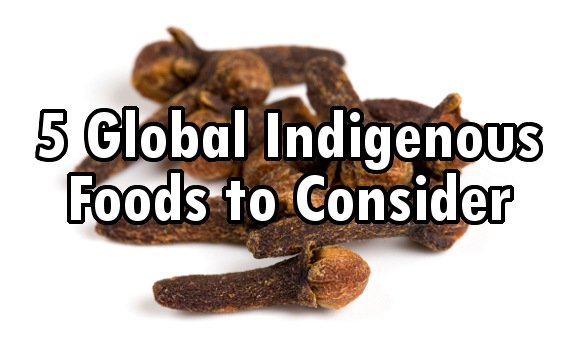Looking for Something New? 5 Global Indigenous Foods to Consider

 In an ideal world, we eat in-season foods grown as locally as possible. And while the vast majority of us still shop at grocery stores and buy imported treats from time to time, edible healing plants are hiding in plain sight all around us – sometimes in our own backyards. A recent article over at EcoWatch suggested 10 indigenous foods from around the world that are nutrient-dense and delicious to boot. I have selected a few that are easiest to find and definitely worth your consideration if you aren’t eating them already.
In an ideal world, we eat in-season foods grown as locally as possible. And while the vast majority of us still shop at grocery stores and buy imported treats from time to time, edible healing plants are hiding in plain sight all around us – sometimes in our own backyards. A recent article over at EcoWatch suggested 10 indigenous foods from around the world that are nutrient-dense and delicious to boot. I have selected a few that are easiest to find and definitely worth your consideration if you aren’t eating them already.
1. Lemongrass (Oceania)
Originally from the region known as Oceania—a series of small islands in the Pacific Ocean—lemongrass can now be found just about anywhere. Specialty shops and farmer’s markets carry the herb which is not only flavorful and good-smelling, but can provide many health benefits.
Brewed into a tea, lemongrass is effective at treating headaches. It also harnesses antioxidant, antiseptic, and antifungal properties. Further, it is useful for dissuading insects in a garden.
2. Macadamia Nuts (Australia)
These nuts originated in Australia, but are now part of global cuisine. Macadamia nuts are rich in “good” monounsaturated fats, as well as vitamin E, fiber, and calcium. Generally, you’ll find them in desserts, but they can also be used in a variety of dishes or enjoyed raw.
3. Flaxseed (Middle East and Western Asia)
Found to protect the body from radiation, flax seed originated in the Middle East and Asia. Now, it’s found in everything from muffins to cereals. Still, flax seed purchased whole and raw is likely the best option available. You can crush them to release the oils and then sprinkle them on salads, side dishes, and my favorite, homemade granola. Flax is high in fiber and omega 3 fatty acids.
4. Cloves (Indonesia)
They are the unopened pink flower buds of the evergreen clove tree. Originating in Indonesia and most often used in desserts, cloves offer a wealth of health benefits. Eugenol, an anti-inflammatory component found in significant amounts in cloves, has been shown to have anesthetic (numbing) and antibacterial effects (hence the use of clove oil in mouthwashes and sore throat sprays). Cloves can be used easily in Caribbean- and Indian-inspired dishes. They are also good in fruit compotes and bread stuffing.
5. Yellow Dock (Northwestern North America)
Also known as Indian rhubarb, yellow dock roots were often used medicinally by Native American groups for ages. It was/is often used to fix digestive issues, resolve skin ailments, and reduce swellings. The leaves can be cooked and eaten.


Eat healthy ….It’s easy to do !